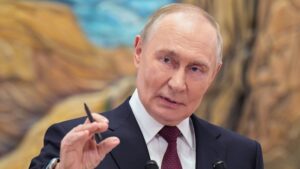
European Union officials are preparing for a significant communication from US President Donald Trump regarding potential tariffs that could impact trade between the United States and the EU. This anticipated letter is expected to detail the specific tariff levels that may be imposed on various goods imported from the bloc.
As trade tensions between the two economic powers continue, the EU is keenly aware of the implications these tariffs could have on its member states. The letter could arrive in the coming days, with discussions surrounding trade policies becoming increasingly urgent.
Trade Relations at a Crossroads
The relationship between the European Union and the United States has faced challenges, particularly in recent years. Both sides have engaged in negotiations over tariffs that affect sectors such as agriculture, automotive, and technology. The EU has previously raised concerns about the impact of US tariffs on its economy, especially in light of past decisions that have led to retaliatory measures.
According to EU officials, the upcoming letter from President Trump is expected to clarify the US stance on tariffs, which have been a contentious issue in transatlantic relations. The timing of this communication is crucial, as it may influence ongoing discussions about trade agreements and economic cooperation.
Potential Economic Impact
If implemented, the tariffs outlined in the letter could have significant consequences for European exports to the United States. In particular, sectors like agriculture and manufacturing could be affected by higher costs associated with imported goods. The EU’s response will likely depend on the specifics of the proposed tariffs, as well as the broader economic context.
Economists are closely monitoring this situation, as changes in tariff levels can lead to shifts in trade balances and influence market dynamics. The EU’s reliance on exports to the US makes this letter particularly important, and officials are poised to respond accordingly to safeguard their economic interests.
As the European Union awaits this critical communication, the ongoing dialogue between the US and EU continues to evolve, reflecting broader global economic trends and the complexities of international trade.






